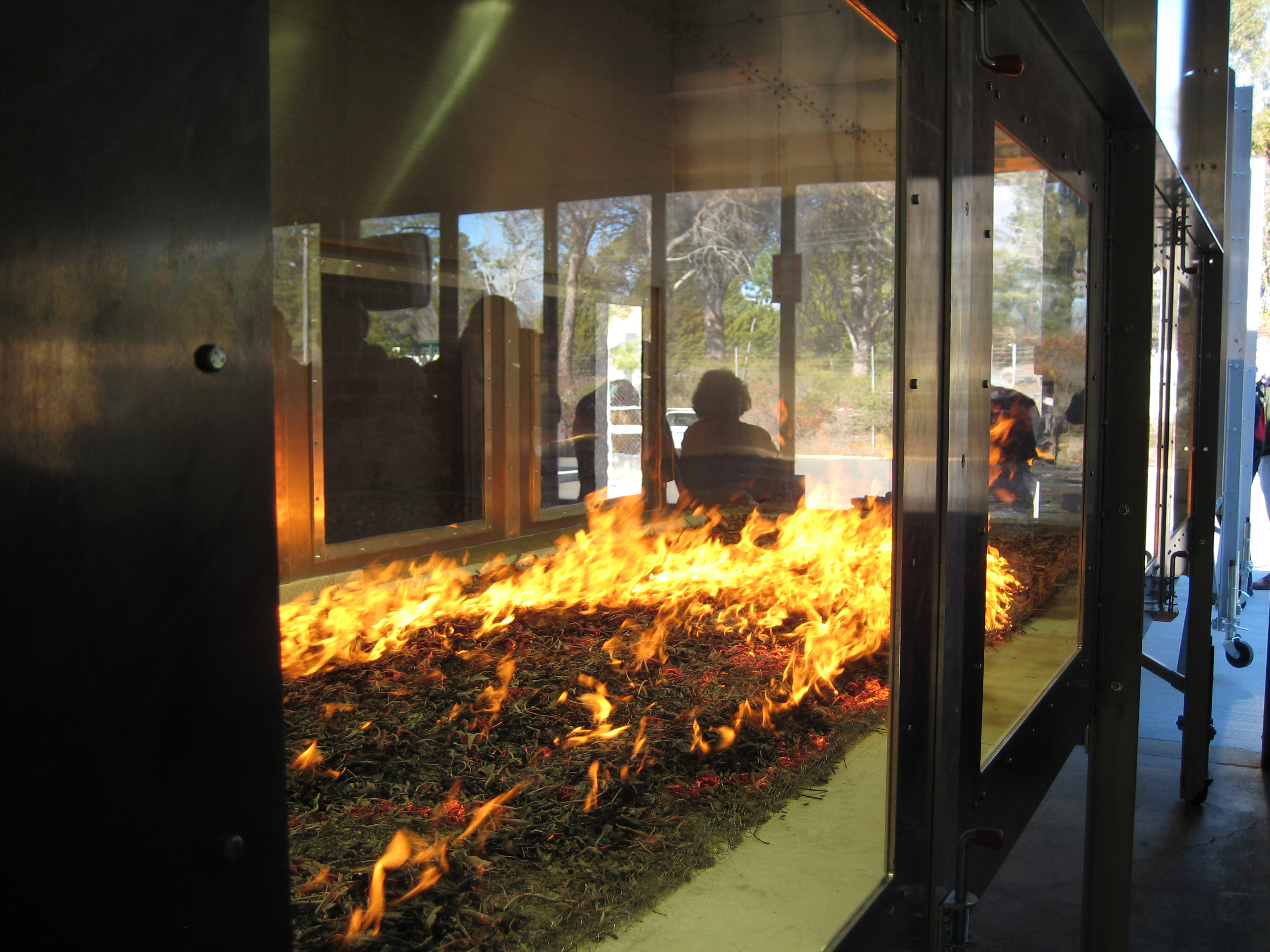The Pyrotron in action. Image by Andrea Wild.
Summer starts today – and it’s predicted to be a hot, dry one. Unfortunately, we all know what that means – fires.
Forget fighting fire with fire – although that’s a major part of what the fire services do to control the spread of fires. We’re fighting fire with knowledge.
Not all fires are the same. It depends on many factors – the type of fuel, the moisture in the fuel, the wind speed and direction, to name by no means all. One large fire can also be an amalgam of many small fires, all with their own characteristics, components and behaviour.
This is extremely hard – bordering on impossible – to study in the field. But it’s something we need to know about to be able to predict how fires will spread. It’s knowledge that could save lives.
Getting that knowledge has been fraught with difficulty. For obvious reasons, we could only do live test burns in low fire danger weather conditions. We couldn’t get up close to observe, and we could never be sure our monitoring equipment would be in exactly the right place. Nor could we ever repeat an experiment under exactly the same conditions.
So we built the Pyrotron. It’s a 25 metre wind tunnel, mostly made from aluminium. Its floors are heat-resistant ceramic tiles (with heat sensors embedded), and it has a glass observation wall. A fan pumps 22,000 litres of air a second down the tunnel, replicating the winds that blow through forests.
This allows us to simulate fires with precise knowledge of the conditions – something we could never do in the past – and repeat the experiment as needed.
What we’re looking at is the physics and chemistry that makes up the way a flame spreads across different kinds of fuel under different conditions. This involves turbulence – a chaotic process that isn’t well understood. After a certain point, the flames themselves create turbulence. Understanding how this feeds into the fire is a key to understanding fire behaviour. Using the Pyrotron, we can start to come to grips with it.
It’s the only structure of its kind in the world, and it’s attracted attention from outside Australia. We thought you might like to see this BBC story about it. Not only is it an excellent explanation of how the Pyrotron works, but (let’s be honest) how many Australians can resist telling the world how tough we are for living here?



3rd December 2014 at 4:19 am
Big !!